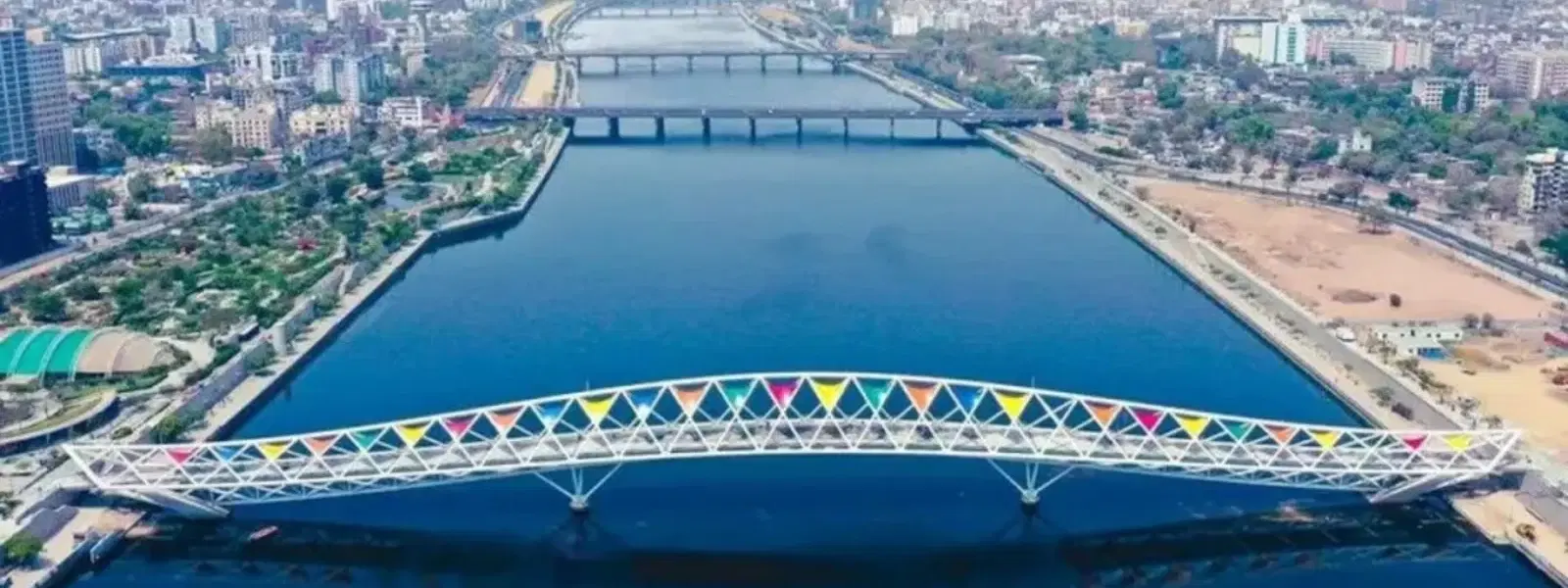
Flights
•04 min read

Imagine waking up to the sound of waves crashing on the shore or witnessing the gentle flow of a river mirroring a vibrant cityscape. Waterfront cities in India are not just scenic escapes—they are living canvases of culture, history, and natural beauty. This guide takes you through the diverse urban landscapes that flourish along the water, offering insights into coastal, riverfront, lakeside, and harbor cities, while revealing unique tips and practical advice to help you explore these enchanting destinations.
Waterfront cities in India come in many forms. There are coastal cities, where the ocean meets the land; riverfront cities, built along the banks of majestic rivers; lakeside cities, with shimmering inland waters; and harbor cities, hubs of trade and commerce. Each type is shaped by its proximity to water, influencing local culture, economy, and lifestyle. Whether it’s the rhythmic pulse of ocean tides or the meandering flow of a river, these urban areas boast a unique charm that is both refreshing and dynamic.
These cities provide much more than just a pretty view. Natural beauty is complemented by recreational opportunities such as boating, water sports, and serene walks along the promenades. The cultural heritage of these areas shines through in festivals, local cuisines, and historical landmarks. Furthermore, waterfront cities play a pivotal role in boosting tourism, trade, and urban growth, making them central to both the local economy and India’s overall development.
India is home to some truly iconic coastal cities. Goa, with its sun-kissed beaches, vibrant nightlife, and rich Portuguese heritage, is a magnet for travelers. Puducherry captivates visitors with its French colonial charm and peaceful shores. Visakhapatnam offers a blend of scenic coastlines alongside a significant industrial backdrop, while Kochi provides an intriguing mix of backwaters, bustling spice markets, and historical landmarks that tell tales of bygone eras.
Beyond the well-known destinations lie less trodden paths waiting to be explored. Varkala, with its dramatic cliffs and pristine beaches, offers a serene escape from the commercialized hustle. Similarly, Gokarna provides a quieter, more spiritual alternative to the crowded beaches of Goa, attracting those seeking tranquility and reflection.
India's coastal cities contribute significantly to the country's economy, with ports handling over 90% of India's trade by volume.

Riverfront cities hold a special place in India’s cultural and spiritual heritage. Varanasi, situated on the banks of the Ganges, is revered as a spiritual hub that draws pilgrims from around the world. Ahmedabad features modern riverfront developments along the Sabarmati, marrying tradition with urban progress. Kolkata, with its bustling streets alongside the iconic Hooghly River, exudes culture and sophistication, making it a vibrant center for art, literature, and history.
For many cities, the river is more than a waterway—it is an integral thread in the urban fabric. Rivers influence city planning, drive local festivals, and dictate daily routines. Development projects like the Sabarmati Riverfront illustrate how modern urban design can work in harmony with nature, providing recreational spaces that honor the city's heritage and natural resources.
For those enchanted by serene waters, lakeside cities in India offer a peaceful retreat. Udaipur, often referred to as the "City of Lakes," dazzles with its royal palaces and shimmering lakes, while Nainital, a charming hill station, provides a picturesque setting that is perfect for relaxation and reflection.
Harbor cities in India meld modernity with tradition. Mumbai stands as a bustling financial capital with a top-tier harbor that is vital for commerce, reflecting the dynamic energy of the nation. Chennai, with its vibrant waterfront that meets the Bay of Bengal, represents a city where modern life coalesces with cultural pride and traditional influences.
Some of India's hidden treasures lie in its lesser-known seaside towns. Alibaug provides an accessible retreat from the busy life of metropolitan centers like Mumbai. Meanwhile, Mahabalipuram offers a mix of ancient history and seaside charm with its ancient temples set against a stunning coastal backdrop.

When it comes to popular beach destinations, India does not disappoint. Tourist favorites such as Marina Beach, Kovalam, and Havelock Island attract visitors with their bustling beach festivals, refreshing water sports, and vibrant seafood experiences. Each destination offers its own unique set of attractions that cater to diverse interests, from adventure seekers to those looking for a leisurely escape by the sea.
Mumbai is often referred to as a city surrounded by water due to its location on the Arabian Sea and its extensive coastline.
Goa, Chennai, and Kochi are prominent Indian cities located near the sea, offering a mix of cultural and natural attractions.
Puducherry is considered one of the nicest coastal towns, known for its French colonial architecture and tranquil beaches.
Goa is famously known as the beach city of India, attracting tourists from around the world for its vibrant beach culture.
Udaipur and Nainital are among the best lakeside cities in India, offering scenic beauty and a peaceful atmosphere.
Waterfront cities in India offer a rich tapestry of experiences that combine natural beauty, cultural heritage, and modern urban life. From the dynamic energy of coastal and harbor cities to the tranquil charm of riverfront and lakeside towns, each destination presents a unique narrative. Whether you are the wanderer eager for spontaneous adventures, the planner who values detailed itineraries, a professional seeking efficiency in travel, or a luxury seeker in search of premium experiences, these cities cater to every taste and pace. Explore the magical blend of water, culture, and heritage, and allow yourself to be swept away by the allure of India’s vibrant waterfront cities.